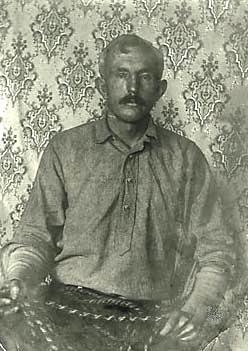Self-interest was the driving force that compelled men of the sea to accept the international law of prize . . . [including merchants] because it brought a valuable element of certainty to their dealings. If the rules were clear and universal, they could ship their goods abroad in wartime, after first buying insurance against known risks. . . . On the other side of the table, those purchasing vessels and cargoes from prize courts had the comfort of knowing that what they bought was really theirs. The doctrine and practice of maritime prize was widely adhered to for four centuries, among a multitude of sovereign nations, because adhering to it was in the material interest of their navies, their privateersmen, their merchants and bankers, and their sovereigns. Diplomats and international lawyers who struggle in this world to achieve a universal rule of law may well ponder on this lesson. –Donald A. Petrie, The Prize Game, p. 145-46.
*****
This is cool. Mr. Petrie has written an interesting book that deals with prize law back when privateering was a common worldwide practice. Prize law was the necessary foundation of laws that insured everyone who actually captured an enemy’s stuff, could legally keep it. This applied to privateers, but it also applied to the various navies that practiced the concept of commerce raiding and taking prizes.
On a side note, the US Navy continued paying prizes to it’s officers all the way up until the Spanish American War. Imagine if today’s Navy could seize ships and be legally awarded that prize in a court of law?
The other reason why I wanted to get this out there, is that if we are to apply the Letter of Marque to modern day problems, the other necessary component that made the LoM work properly back then was prize law and courts who adhered to those laws. And because prize law dealing with privateering or commerce raiding has atrophied do to non-use, it is necessary to bring up some recent literature on the subject, as well as older texts. A good first step in that process, is to refer to the mavens on prize law, if such a thing exists. Mr. Petrie and his book would be a good first step. Studying Grotius would be another good step to create a modern foundation of prize law. (there are others listed below) I am also positive that there are plenty of lawyers out there that could reawaken prize law in this context.
If the readership has any links to prize law related articles or books, I would love to add that stuff and make this post a good place to collect that information. Prize law is also way outside my lane, and I really cannot give it the proper respect. So if you are a lawyer, judge or legal maven, please step in and correct the record, or add to the stew of ideas here. I am all ears. –Matt
—————————————————————–

La Blanche towing la Pique, a French prize, 1795
The Prize Game: Lawful Looting on the High Seas in the Days of Fighting Sail
Donald A. Petrie
Product Description
In the Middle Ages, European nations raised standing armies to fight their foes. At sea, however, their resources were much more limited and largely dependent on privately owned vessels and their crews. To stimulate the growth and ardor of their fleets, the monarchs of Renaissance Europe offered the crews of their naval vessels and licensed privateers a chance to get rich by plundering enemy ships and cargoes. These actions gave rise to the doctrine and practice of maritime prize–a subject little studied but regularly referred to by C. S. Forester, Patrick O’Brian, and other popular writers about the era. Now, after a decade of research in European and American archives, Donald A. Petrie explains the origins of prize taking, the rules of the sea that became universally accepted among the maritime powers of the world, and the final decline of prize taking during the nineteenth century.

